Top 10 Things to Do in Aosta Valley

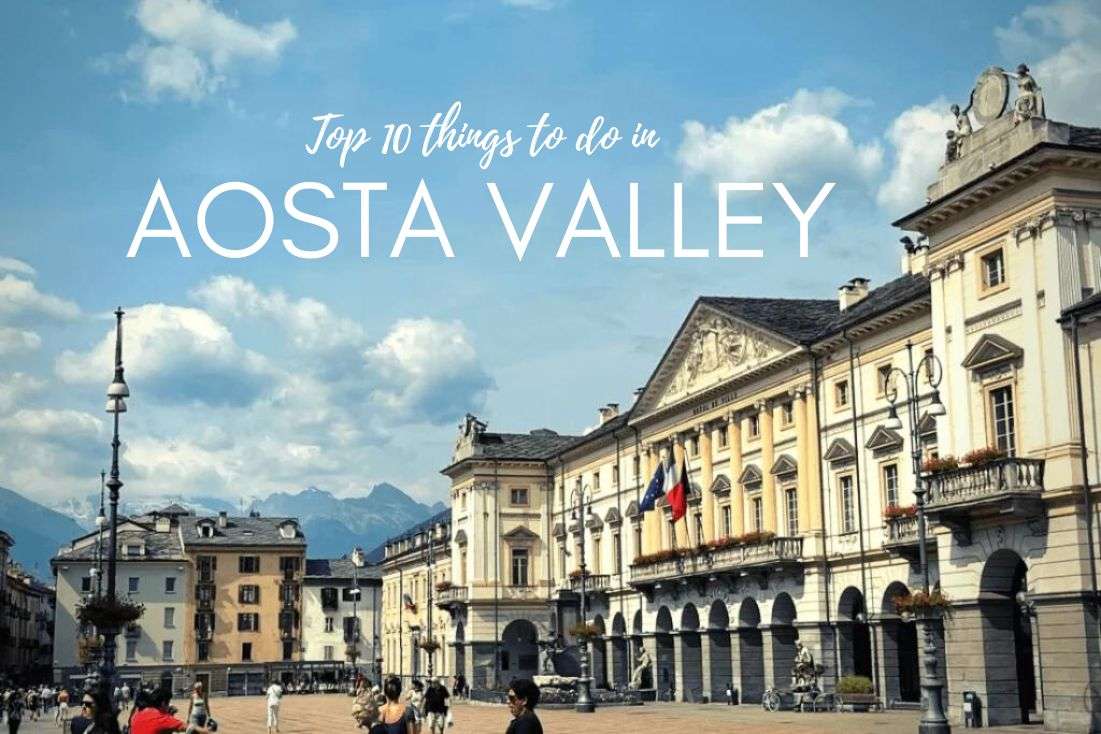
Aosta Valley is a perfect vacation base in the northwest of Italy. Mighty mountains to hike, beautiful castles, churches, ancient Roman ruins, and on top of that, it’s a short drive to both France and Switzerland, which makes it a top destination for Euro-trip. Here are the 10 best places to visit in Aosta Valley according to my infamous experience. But when I managed to do it sick, it’ll be a piece of cake for you.
Don't forget to book your hotel well in advance. You can use my booking.com affiliate link to help me keep improving this blog with more and more useful travel tips and insights.
You might also be interested in reading:
- Cinque Terre Itinerary for 2 Days: A Perfect Weekend Trip
- Travel Tips for Italy: 10 Things to Know Before You Go
- Food of Italy: 12 Facts You Didn’t Know
- A Sceptic Visits the Turin Shroud: It Sucks and It’s Fake Anyway
- What to Do in Turin: 9 + 1 Places to Visit
Aosta City
Aosta is sometimes referred to as an “ancient Roman capital of the Alps”. You can see for yourself, there are plenty of ancient sights still standing to this day. Nowadays it’s the capital of Aosta Valley or in Italian Valle d’Aosta, the smallest autonomous region in Italy mostly famous for its convenient position in between the highest peaks of the Alps.
You can also read an article about the nearby Italian region of Cervinia.
Fun fact: The name of Aosta is actually the linguistic distortion of the original Augusta Praetoria which referred to the city origins. It was founded by Emperor Augustus who subdued the former troublesome Salassi tribe and settled the town with 3 000 of his personal praetorian guards. If you are curious about what happened to the Salassi, Augustus sold them into slavery.
Are you proud of your impeccable French but too sad you can’t flex with it in Italy? Good news for you, the Aosta Valley is bilingual, so that you can charm the locals with your charme français. It’s because, in the past, the area was perpetually the cause of strife between France and Italy. So, they basically played tug-of-war with it, I guess the French didn’t have Il-nam and Sang-woo on their team in this game.
1. Roman Relics
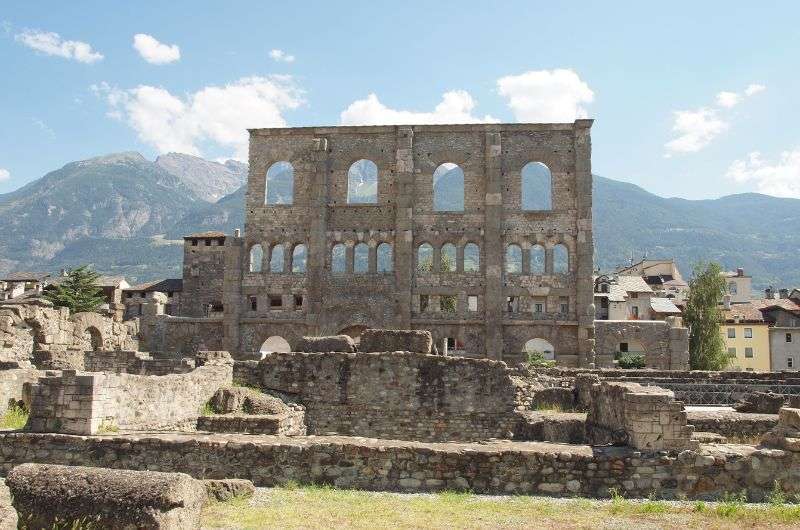
Roman relics
I think Aosta has maybe most surviving Roman monuments north of Rome. I particularly admired the huge Praetorian gate which guarded the main entrance to the ancient city. Then there’s 22-meters-high (72 ft) Roman Theatre followed by the Arch of Augustus and Roman Bridge. The center of the ancient city was gathered around the Roman Forum and Cryptoporticus, the underground building with a vaulted double corridor.
Tip: You may already notice I’m a city pass freak. But hey, it’s more comfortable and usually also cheaper. Buy the Aosta cumulative ticket for 10 EUR (8.50 GBP / 11.50 USD) and you have access to all the historical sites and museums in Aosta.
2. Regional Archeological Museum (MAR)
The chronological interactive path through the Aosta history. Take the time to explore the exhibition from prehistoric times to more recent history. The museum is also included in the cumulative ticket.
I was in the famous Turin's shroud. My impressions were...well, find out in a separate article.
Hotel Le Parfum du Sel in Aosta Valley
I recommend the very well rated hotel Le Parfum du Sel, located right in Aosta. It is in a nice setting, offers nice rooms and a spa. Good for relaxing after a trip.
Prices start at USD 202 per night.
3. Church of St. Lawrence (Chiesa Palocristiana di San Lorenzo)
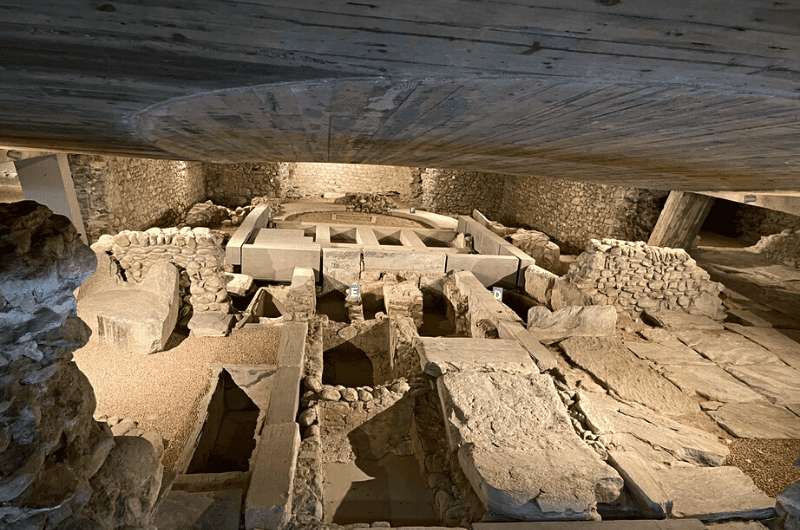
Chiesa Palocristiana di San Lorenzo inreior exponates
Under this little deconsecrated church lie the remains of the cross-shaped basilica from the 5th century. It’s the oldest Christian archeological site in Aosta. Yeah of course it’s just a bunch of rocks in the ground under a former church, but for the fans of history, like me, it’s a captivating experience… and also, it’s free with the Aosta cumulative ticket, so why not.
4. Megalithic area of Saint-Martin-de-Corléans
This place is mind-blowing. Especially for kids or grown-up boys like me. Not only it’s one of the most important archeological sites of Europe with some very rare archeological findings displayed, but hey, there is a life-size replica of a saber-toothed tiger, all kinds of dinosaurs, and real prehistoric skulls! It’s located further from the city center on the way to Mont Blanc.
5. Cathedral of Aosta
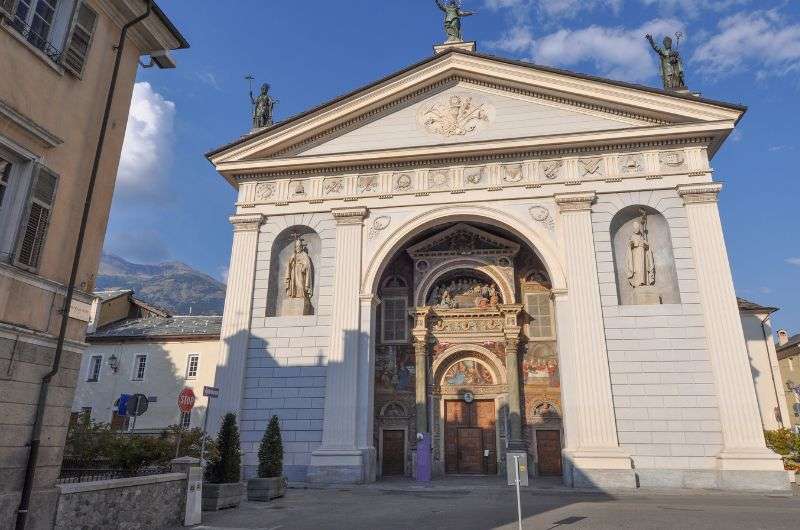
The Cathedral of St Mary of the Assumption and Saint John Baptist
The Cathedral of St Mary of the Assumption and Saint John Baptist stands right in the city center, just a few streets away from the Roman theatre. The building is a mosaic of different architectural styles. The front façade is neo-classical from the 19th century, then there’s a richly decorated renaissance portal to the cathedral and stunning Romanesque frescoes inside. I think I’ve never seen so many different styles in one building. Make sure to visit the cathedral inside (not only take a selfie in front of the façade like many other tourists).
In Italy, I also visited Genoa, where I saw San Lorenzo Cathedral. However, I was not nearly as impressed with that as I was with the Cathedral of Aosta.
Tip: There’s a super handy map of Aosta with all the important sites numbered and the street index. Ironically, I searched for all these things on google maps like a retard, since I discovered this beauty only now, writing this article. :)
@ Art Hotel Grivola, Breuil-Cervinia
If you want to enjoy a majestic view of the Matterhorn in Cervinia - the Art Hotel Grivola is a great choice. It's a bit more expensive, but the surroundings are the best. Especially because of the good breakfast, convenient parking and the overall offer.
Prices start at USD 261 per night.
Aosta Valley
Aosta is super fun, yet super tiny. So, if you’re planning on staying there longer, you should think bigger. We used the city as a base camp and made the expeditions around valley from there. By car, you get everywhere in an hour. Including Mont Blanc and Matterhorn, which is convenient. From the other side it’s much further away from each other.
6. Fenis Castle
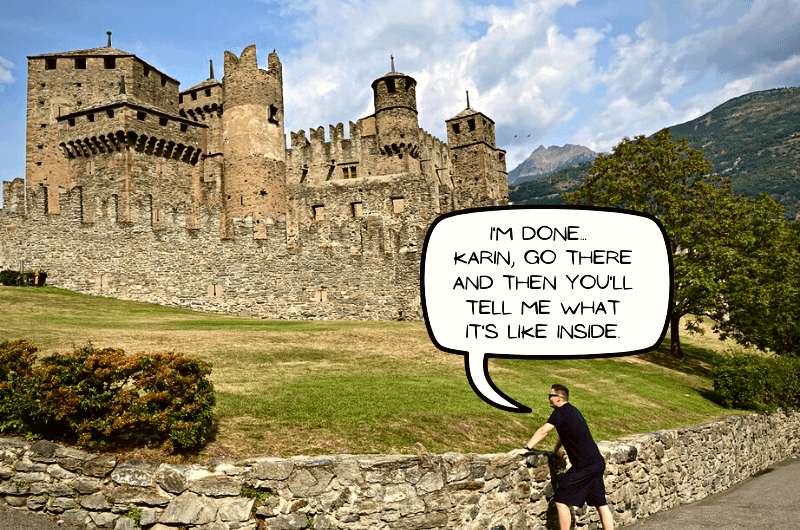
There’s nothing like a rocky support when you have the man flu.
The Aosta valley is famous mostly for the mountains and then for its castles. Because I was a sick sucker when we were in Aosta, I decided for Fenis Castle mainly because it’s the only one not situated on the hill. You know how I’m hating most medieval castles because there’s nothing inside? Well well well, here’s the shout-out to Fenis Castle which is not only in great condition but also furnished! Despite it looking like a proper medieval castle with its walls and towers, it was never built primarily for military purposes, but as a prestigious residence of the Challant-Fénis family.
Opening times:
- October-March: 10 am to 5 pm (closed from 1 pm to 2 pm due to lunch break)
- April-September: 9 am to 7 pm
- Last tour begins 30 minutes before closing time.
Tickets:
- Adult: 7 EUR (6 GBP / 8 USD)
- Kids, students under 25 years and disabled: free
7. Great Saint Bernard Pass
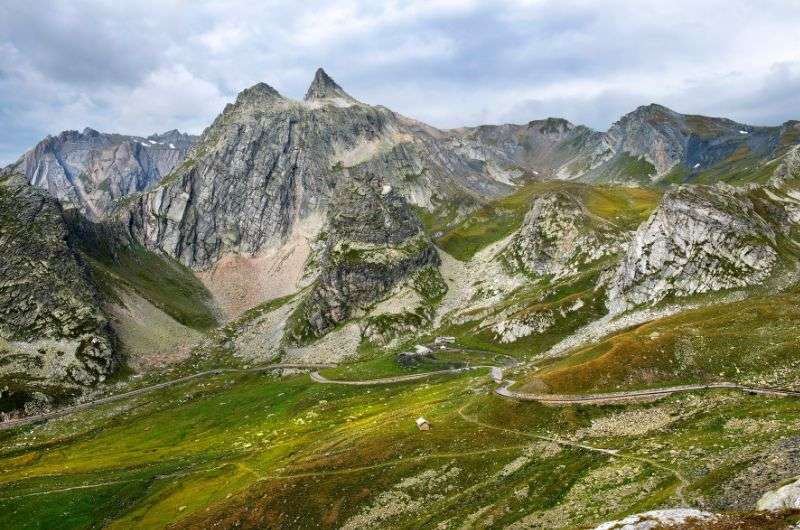
Great Saint Bernard Pass
On your way to or from Switzerland, you may use the Great St Bernard Tunnel under the mountains. However, I strongly advise you to make time in your schedule and stop at this beautiful mountain pass leading to Switzerland. The route winds along the lake towards the Great St Bernard Hospice. The whole pass was named after Saint Bernard of Menton who founded the hospice back in 1 045 as a shelter for the wayfarers. I guess nowadays you connect the name primarily to the big slubbering dog breed, which was established and trained to guard and protect the hospice canons and to help them find the lost travelers under the snow. Spoiler: the St. Bernard´s breeding kennel is still there!
The route is usually accessible from mid-June to mid-October and closed through winter due to a large amount of snow. Don’t forget warm clothes though. We were there in summer and it’s still quite chilly (around 6° C /42° F). It makes sense given it’s 2 472 meters above sea level, but I saw people who obviously forgot about that, and I think they missed their jacket a lot. What doesn’t make much sense to me is that it’s beautiful weather everywhere on the Italian side. Cross the border to Switzerland and you get soaking wet. Don’t ask me why, but in the Swiss and Austria part of the Alps, it’s always raining.
Tip: If you want to learn about nearby Austria - check out my article on the best places in Austria.
8. Gran Paradiso
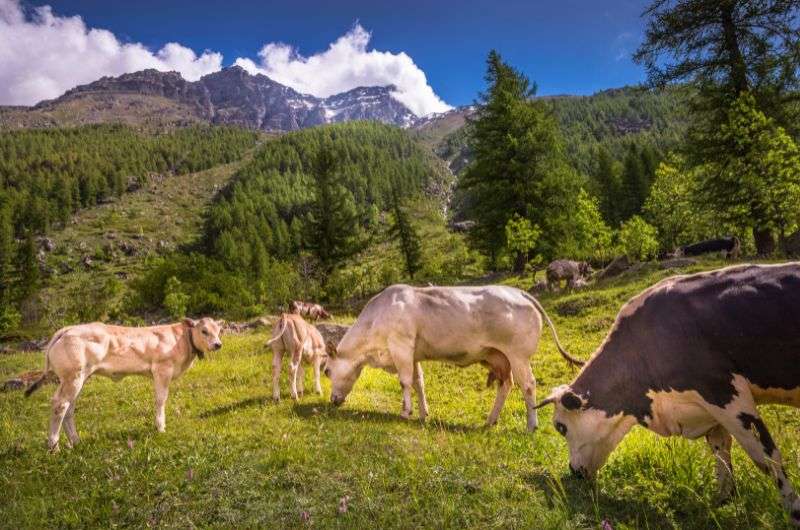
Our horned guide along the River Trail
Gran Paradiso is the oldest Italian national park with one of the highest peaks of the Italian Alps with 4 061 m (13 323 ft). For the lack of imagination I presume, the peak is called Gran Paradiso as well. This area provides perfect Mont Blanc photo spots and it’s rich with various fauna and flora species. The park is divided into four territories: Valle Soana, Valle Orco, Valle di Cogne and Valle di Rhêmes and it’s covered by 183 lakes and 59 glaciers.
Ideal for a nice hike, right? Yeah, I thought so too, so I planned the hike up to the Lillaz Waterfalls. But as I mentioned earlier, we had bad luck and caught a cold before we depart for Italy. Karin caught it first, so she was already alright, but I was at my worst when we got to Gran Paradiso and after some 400 meters (1 300 ft) I started whining and decided to take an easier Valnontey River Trail. It’s a super easy, 7 km (4. 50 mi) long circular trail along the creek with stunning views.
The Gran Paradiso is intertwined with more than 500 km (310 mi) accessible trails, so you have plenty of options to choose from. Don’t be frightened when a cow suddenly appears behind the corner. In the Alps, cows are everywhere but usually friendly.
9. Cervinia & Matterhorn
Cervinia is probably the most popular ski resort in Italy and it’s also about an hour´s drive from Aosta. The elevation gain between the city and Matterhorn is huge, it’s more than 2 000 m (6 560 ft)! And do you know what it means? Instagram time! In fact, anywhere around Cervinia, there are so stunning views on Matterhorn you could make a calendar out of these photo shots. And also, it’s so high you can ski there all year round, even in summer. Because it’s so cool, and because we decided to stay there overnight, I wrote the whole separate article on Guide to Cervinia: 5 Things You Need to Know, check it out.
10. Mont Blanc
The highlight of Valle d'Aosta region, mighty and frightful highest Alpine peak. What should you know before you get there?
Fact Check: Mont Blanc is not the highest mountain in Europe!
It has long been considered the highest but recently Mount Elbrus stole its spotlight when it was pronounced to be the highest. What’s the dispute about? Well, technically, the Elbrus with its height of 5 642 m (18 510 ft) is a part of the European continental plate, which makes it the highest mountain in Europe, although it’s located in the Caucasus Range in Russia. So, Mont Blanc is now titled as the highest mountain of the European Union (or western Europe), poor thing.
Anyhow, I bet Elbrus doesn’t have such a badass cableway up to the top. Mont Blanc does. And it even crosses the borders of Italy and France, so you can literally flee the country in a cable car, how cool is that? Now let’s look at how it works.
How to get there?
The Skyway Monte Bianco first station is located in Courmayeur at 1 300 m (4265 ft). The town is approximately a half-hour drive west of Aosta. In Courmayeur you’ll find several large free parking spots, so you don’t need to worry about that.
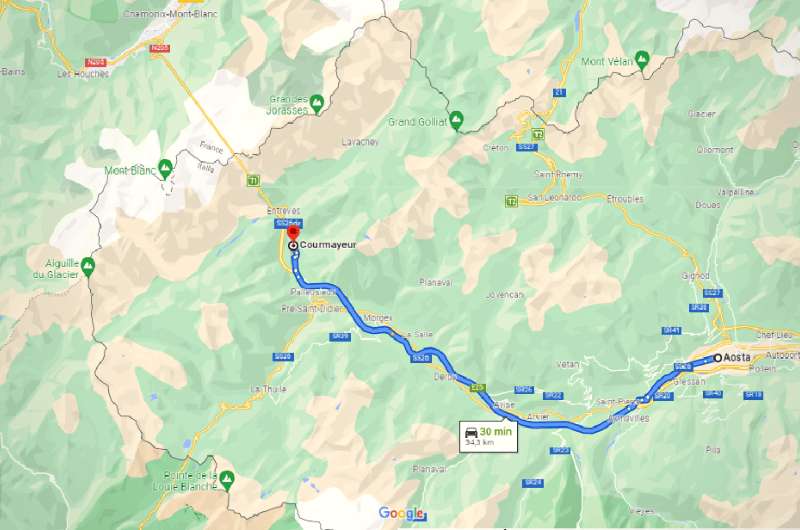
How to get to Mont Blanc from Aosta
Is the cable car leading to the top?
Nope, if you want to get to the peak of Mont Blanc you gotta do it the hard way and be an experienced climber. The cable way on the Italian side has three stations at different elevations, so you can choose where you want to go. And the best thing, the cableway has rotating cabins offering 360° views.
- Courmayeur, The Valley: 1 300 m (4 265 ft)
- Pavillon, The Mountain: 2 173 m (7 129 ft)
- Punta Helbronner, The Sky: 3 466 m (11 372 ft)
At Punta Helbronner, you can visit the circular terrace with a 360-degree view, Skye Vertigo glass platform, or Crystal Hall displaying mountain minerals. From Punta Helbronner station you can either come back to Courmayeur or continue with Panoramic Mont-Blanc to Chamonix.
Opening Times and Tickets:
- The operation times of the cableway change according to season and weather. Always check the official websites for the most recent info.
- The return ticket from Courmayeur to Punta Helbronner costs 55 EUR (47 GBP / 64 USD).
- If you want to experience the Panoramic Mont Blanc ride over the border to Chamonix, prepare to pay 129 EUR (110.50 GBP / 150 USD). The tickets for the Panoramic Mont Blanc can God-knows-why only be purchased on-site (not online in advance).
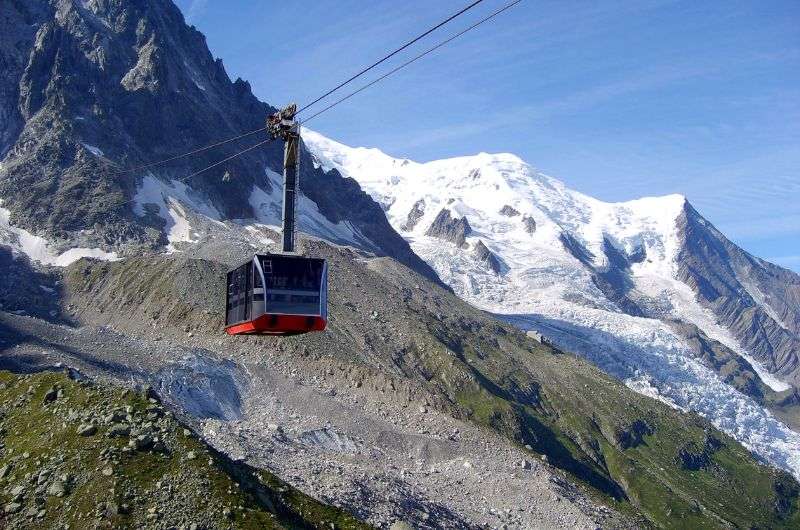
This cable-car takes you really high, but not straight to the top of Mont Blanc
This post contains affiliate links. I earn a small commission if you make bookings through my links, at no additional cost to you. This helps us keep this blog free, thank you!
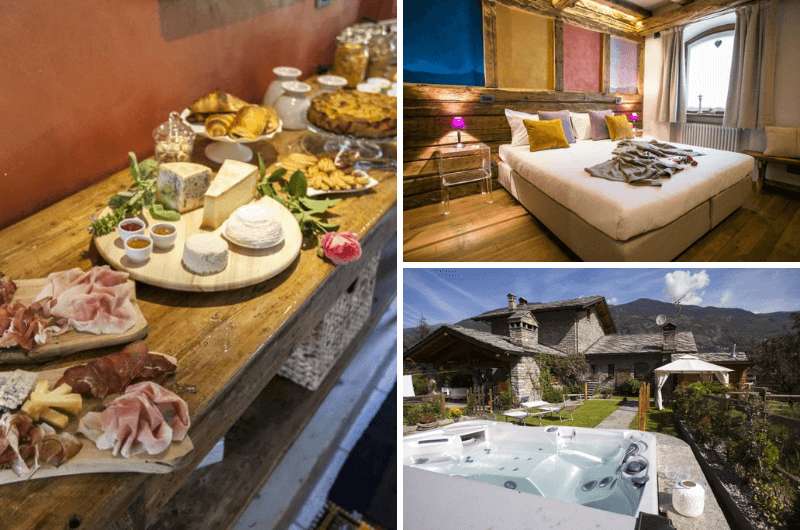
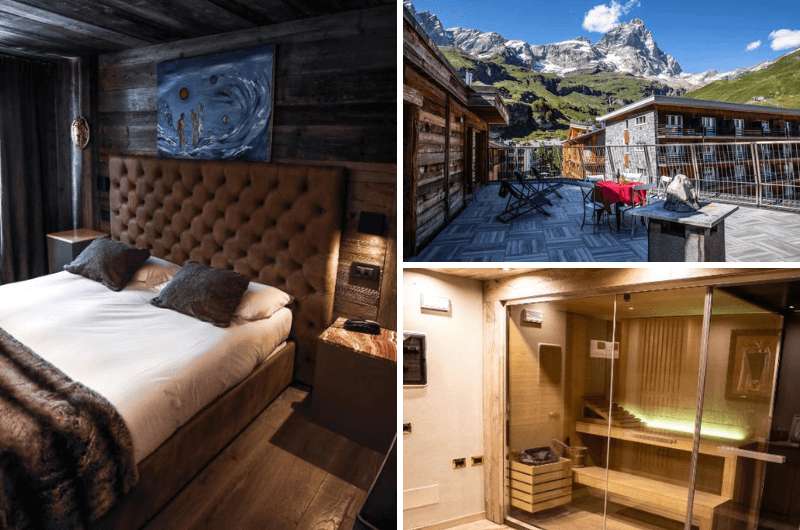
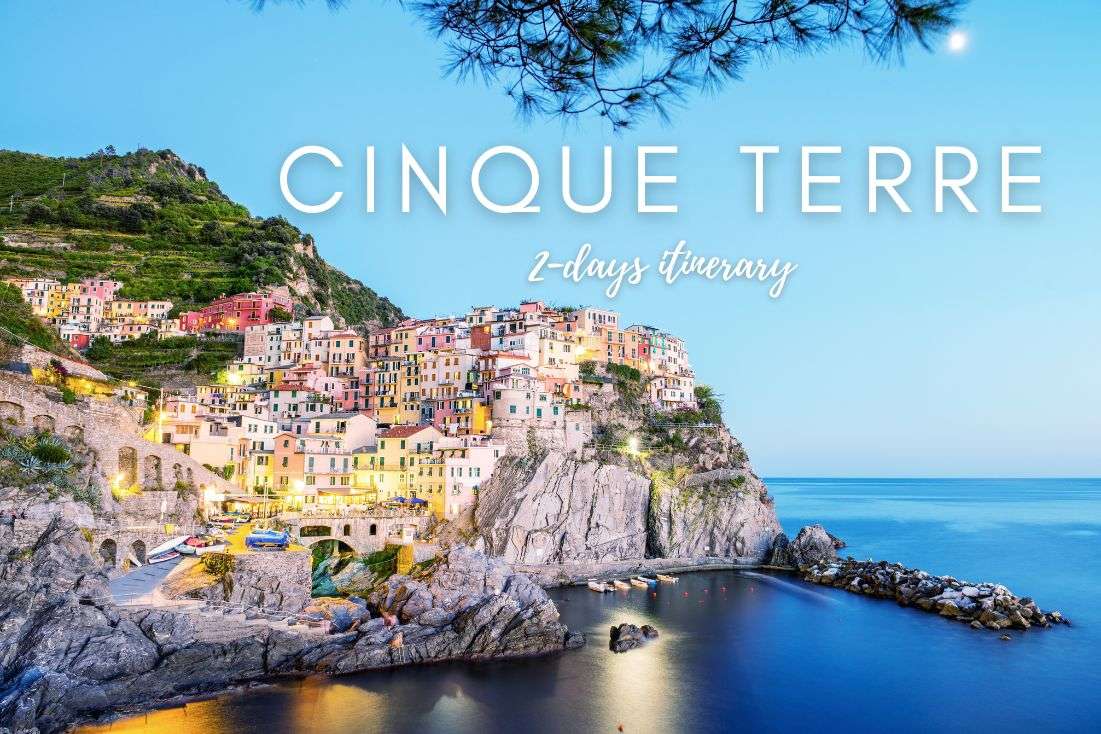
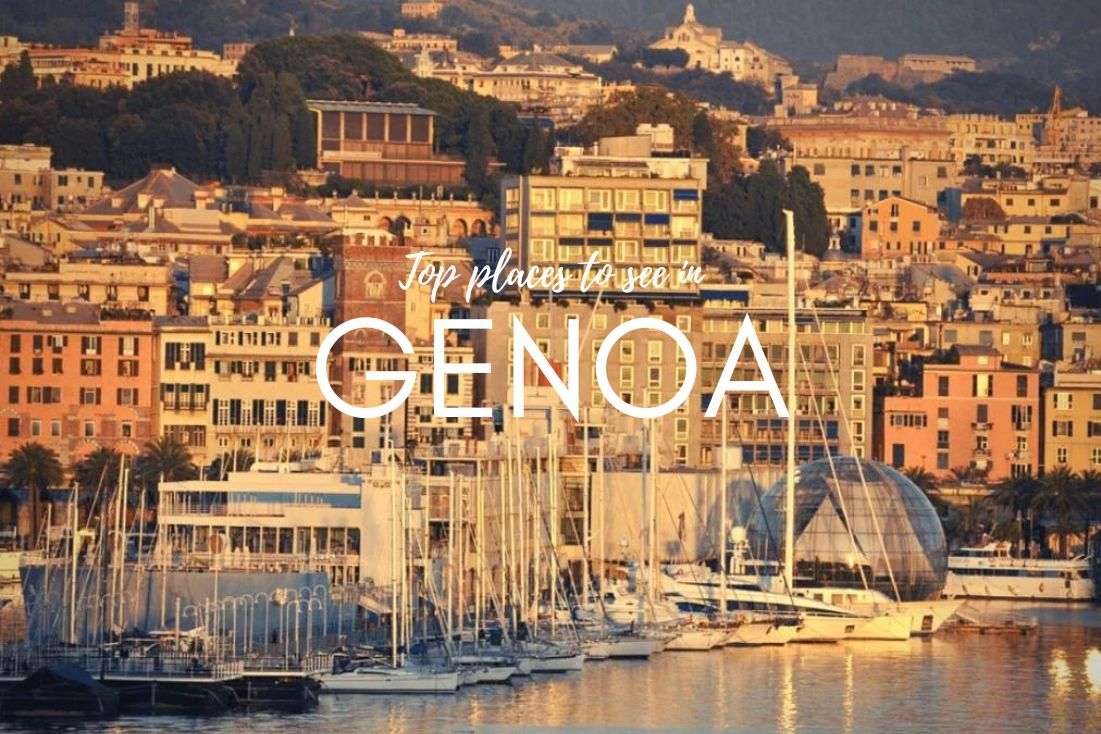
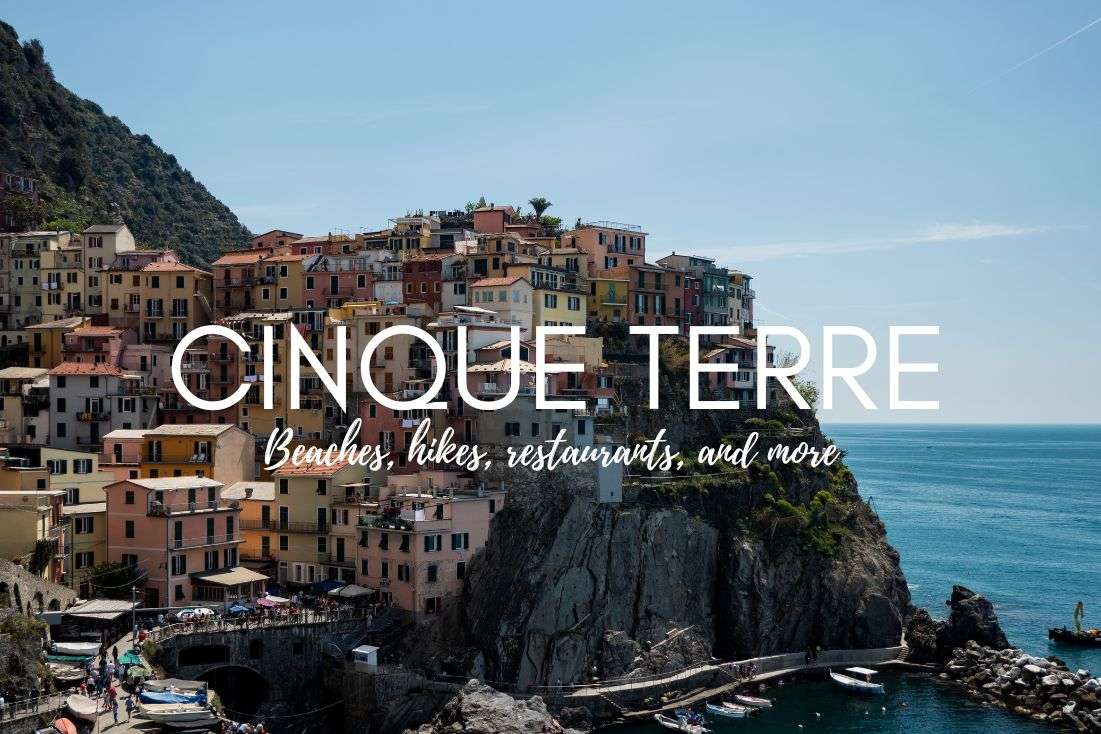




Comments
Thoughts? Give us a shout!